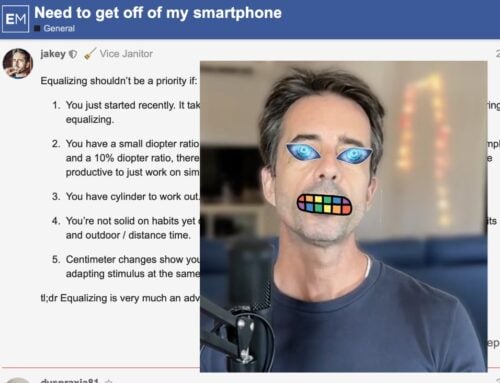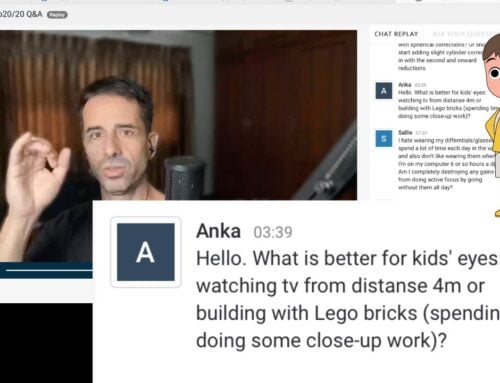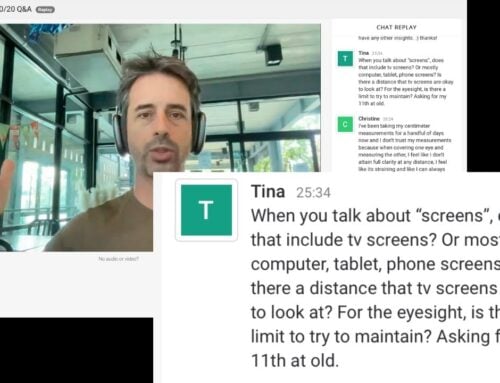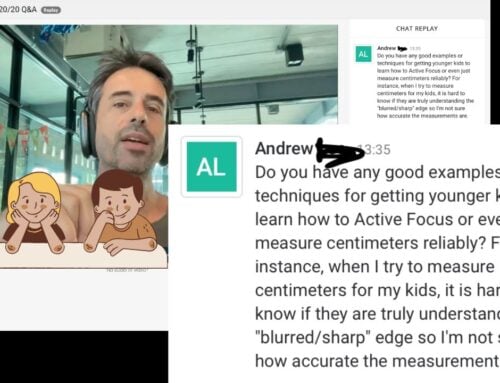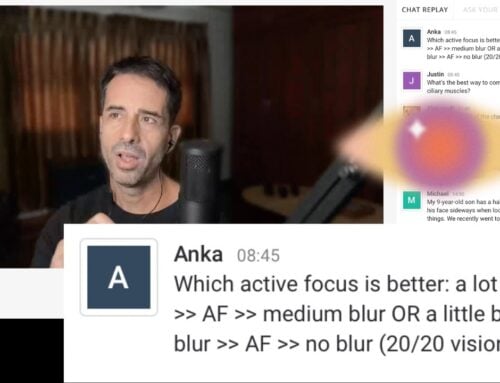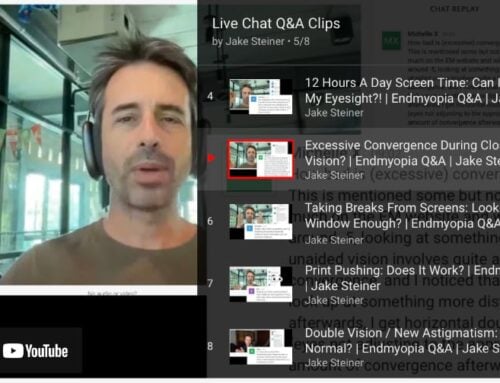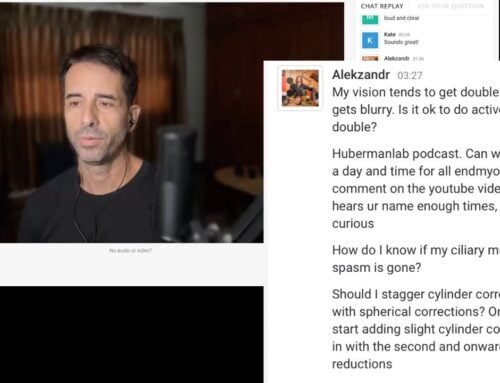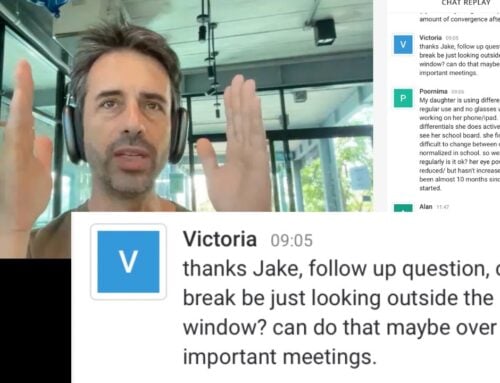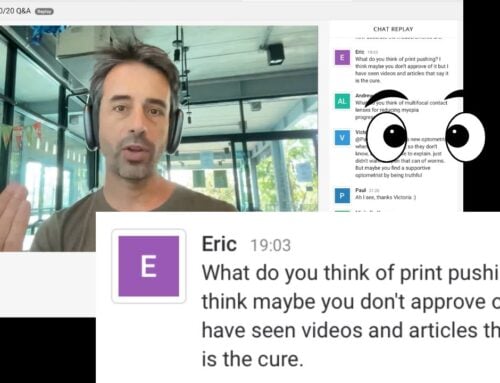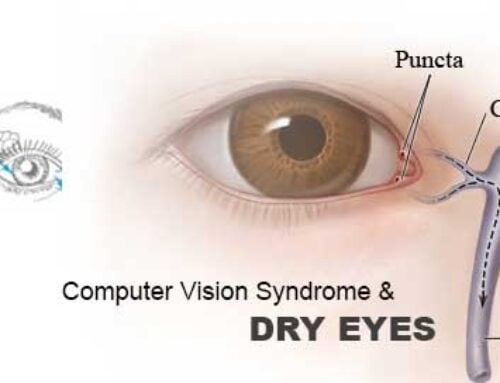Were you making great 20/20 gains in the beginning, but are now stuck? No matter what, all the things that worked before now are getting you no more gains?
Plateaus. This post, for you.
The basics of stimulus based vision improvement are simple.
All you have to know about is 1) strain management and 2) productive stimulus. As with anything human biology though, things always get a bit more tricky once you really get into the ‘biohacking’ past the basic level.
Getting out of 5 diopters for myopia completely for instance, will take more tweaks than just getting out of the first few diopters.
Tweaks you can figure out with the help of this blog, and the Facebook group.
Perhaps the easiest way is to just ask me in the forum. A decade and thousands of students means I’ve probably run into a similar scenario before, and your question or story will remind me of something that worked in the past. Jake is like a totery old wandering library of myopia ending bearded wisdoms.
Let’s get into the story, though. There’s a lot to cover!
Initial 1 Diopter Success
Meet Andrew, who first made it from -3.75 all down to a nice -2.25.
His forum thread starts out like a perfect story of easy sailing, improving your eyesight could literally not be any more simple. Before things got all sideways and off track, it really was looking great for a while:

Look at the forum signature. Nice!
Or not so fast.
Unlike the unicorn pony farmers online, I don’t want to sell you a fairytale here. Yes, stimulus based vision improvement works. And also yes, human biology isn’t a simple starter lego set. One day your eyes accept your efforts as positive stimulus, and then for no apparent reason, the same stimulus is interpreted as habituated strain.
The latter means you’re stuck on a plateau and no matter how long you keep at it, your vision never improves further.
The Ugly Plateau
This is the thing you don’t want to be reading:

Worst part? Look at the date of this post, vs. the last one.
Ouch.
Here’s a weird thing: I like posting these troubling progress updates. I like the stories where things go all wrong and twisted and off-course. Yea sure, the hundreds of great improvement stories here are inspirational and you won’t find this sort of result anywhere else online. All fine and good, improvement and success is nice.
But you don’t learn much from success. It’s failure that holds all the valuable lessons.
Let’s talk about those plateaus. They can happen for a million reasons. Usually it’s students going to fast with diopter reductions. Sometimes someone doesn’t actually learn active focus or get the right habits, but appears to be making gains, just fixing the over “prescription” and reducing some of the close-up ciliary spasm. Sometimes it’s accommodation range, presbyopia related issues. Some students just won’t listen and monkey with too many focal planes.
Improvements stop in each case, though the reasons are completely different. Figuring out what happened is key to getting off the plateau and back to successfully reducing diopters.
Plateau Defeating Tools
Here are some of my comments for Andrew in the more recent (plateau) part of the thread:
Hi Andrew,
These plateaus definitely happen. It’s normal if it’s just a few weeks (all the way to 6 weeks, longer if winter or other external factors). Much beyond that it’s a plateau that is less likely to change unless we change the habits / general focal plane exposure.
Two things: One, getting a period of time of very little effort. Meaning nice clear vision for close-up and distance (ideally without increasing correction, although if the plateau happened right at a reduction, can be considered). Depending on the length of the plateau and how much effort you’ve been putting in throughout the time, adjust this relaxing time period. Longer is better in general.
Then, really pushing things on the distance vision front for a while. No glasses outdoor time, starting with no glasses then going to glasses only if / when you get that typical claustrophobic / ambient light feels reduced feeling. If appropraite, going 0.25 lower on any differential use as well, always keeping good ambient lighting.
Make sense?
You really want to get any potential strain removed that could come from ongoing efforts that the biology refuses to respond to. And then when you re-introduce the stimulus, you want to not have it be the same as before the relaxing period so the same cycle doesn’t start again.
From that you should start seeing improvements again, measure centimeter, eye chart, and distant land mark – as initial improvement can come from any of these. If possible to get one small distance diopter reduction from that to lock in the improvement, then take it easy for a few weeks again.
The takeaway from this is that there’s nothing wrong with your eyes. They’re designed to respond to stimulus, nothing changes that. It’s just a matter of whether the stimulus is working as such or if it’s just turned into habituated strain instead. This happens in all sorts of activities involving demands on our biology, like running or weight lifting, and many others.
Let me know if this helps!
See where I’m going with this?
In Andrew’s case, things that worked before, stopped working. The stimulus is no longer productive. It’s now just habituated strain which in best case scenario just keeps you on a plateau of no changes, in less ideal scenarios can actually cause you to slip back (slightly). It doesn’t happen all that often, but you do want to know what you’re looking at when it does.
Here’s some more of my input (I’m skipping some of the dialog here so that the length of this post doesn’t end up breaking the Internet):
Exactly. The stimulus biology really isn’t very complicated, once you fully understand how it works – and from there tweaking and troubleshooting is reasonably straightforward.
1. Strain. If the ciliary gets locked up every day, it’s really hard to make meaningful progress. The way to tell is to get a morning / relaxing weekend baseline going for a walk, pulling focus, knowing what the relative clarity (and speed of focus) is for various landmarks (street signs, shop signs, license plate distances, etc). Compare in similar lighting after day of close-up. Should be the same as before after a short (15 minute) walk. Can take up to an hour to get back to the same clarity though = ciliary lockup.
That latter is where things leave us a bit in the strain territory which makes it harder to improve. If things don’t clear up after 30 min to 1 hour, then not even enough outdoor time to relax the ciliary. Then definitely not going to get much improvement.
Knowing above, you can assess and balance work requirements with the 20/20 gains.
2. Stimulus. As discussed previously, all stimulus = strain. It’s just that it’s *productive* strain, causing the improvements we’re looking for. The focus challenge needs to get us that average 1/4 diopter every 3-4 months. If it doesn’t, the biology stopped accepting it as productive strain.
No big deal. Reset is key there, plenty of time not going for that stimulus, then resuming with a slightly altered approach. My favorite is something like a holiday, way more outdoor time, good light, etc.
3. Habituation. From above, same as stimulus that stops being productive, sometimes we get habituated to blur. Stops the visual cortex from working well on clearing up the image. Walks while mostly looking down, a lot of close-up with smartphones, diopters reduced too aggressively, anything that stops having that all important blur horizon at the right distance, where we want to use it.
4. Slowly wins the race. Any changes you make always should be simple, small, and gradual. 1/4 diopter change, not more. Give it 4-6 weeks, see how it does. Very important, small change, give it time. Quantify and log changes, don’t leave it as a subjective guess for next month.
5. Lock-in. You were almost there, with a leap in improvement. You noticed it, well observed. So it’s there, almost there. Taking a small step back, then perhaps using that holiday and altering the stimulus a bit, getting to that next level, then locking it in with a reduction (or back to the previous lower diopters that just didn’t quite work that time). Lock in is key to prevent sliding back to previous levels.
Important to realize that it’s always, always like this. Eyes, very predictable. Strain and stimulus. Understanding above, relaxed and patient in applying it, recognizing the signs, you always end up getting the improvement.
Actionably, I’d go back to -2.50 at most. The 1/4 diopter should do the trick.
Also, big props for being patient and hanging in there. Well done! ?
Andrew definitely has been hanging in there.
Which isn’t in every way a good thing. Patience is nice, having a month or two of zero change happens, all that is ok. But when you’re looking at three, four, six months of no change and you’re working on it, you want to stop and realize that you’re now just creating unproductive strain.
I know, right? Why can’t stuff ever just be easy.
And also this is why BackTo20/20 has a support forum and isn’t just some ebook, and why the bearded brain in a jar that is your darling eye guru continues to show up and tell stories.
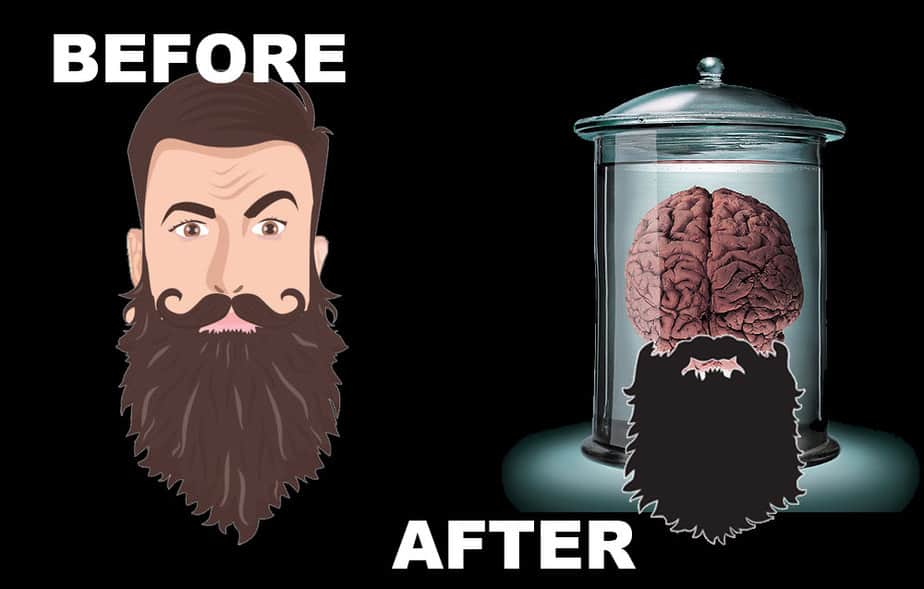
Yes that Photoshop was productive use of Jake-time.
Hopefully all this is starting to make sense.
You want to take your time with all of this vision improvement business. Read a lot, know what’s going on, then make small, measured, well documented adjustments. Assess how your biology responds. Hopefully you’re just making the 20/20 gains that you read about 95% of the time here in the blog. Sometimes maybe though, you won’t. Realize that a month or two might just be normal, and what to do beyond that.
Here’s the complete forum thread with Andrew (if you have BackTo20/20 access). There are 40 (!) individual posts there, of just Andrew and I discussing his progress. This post here, just some of the highlights.
The forum really is a gold mine. If somebody were to stumble over the cord of my brain jar tomorrow, Jake unplugged, you’d still be able to dig through years and years of forum threads. There are a ton of case specific stories and best of all, you can look and see how my advice works out in each individual case.
Naturally, all Jake wisdom is infallible.
And even if it isn’t, this resource is all about the nitty gritty. I’ll always post all the best news just as quickly as the most unglamorous failings. Also realize this: The victories are all yours, and the failures mine. Whenever you’re not making the gains (assuming you’re reading all of this bloglet or are in BackTo20/20), it’s probably me who left out something, didn’t explain something. This is all a bit cutting edge, a definite work in progress.
That’s it, darlings. This post has gotten way long enough. If you want more stories, dig into the BackTo20/20 forum. Or go join the Facebook group and chat with fellow darling eye gurus.
Cheers,
-Jake





